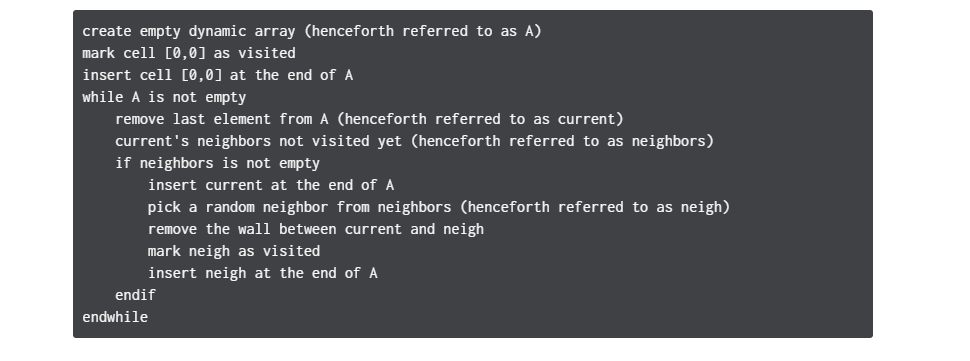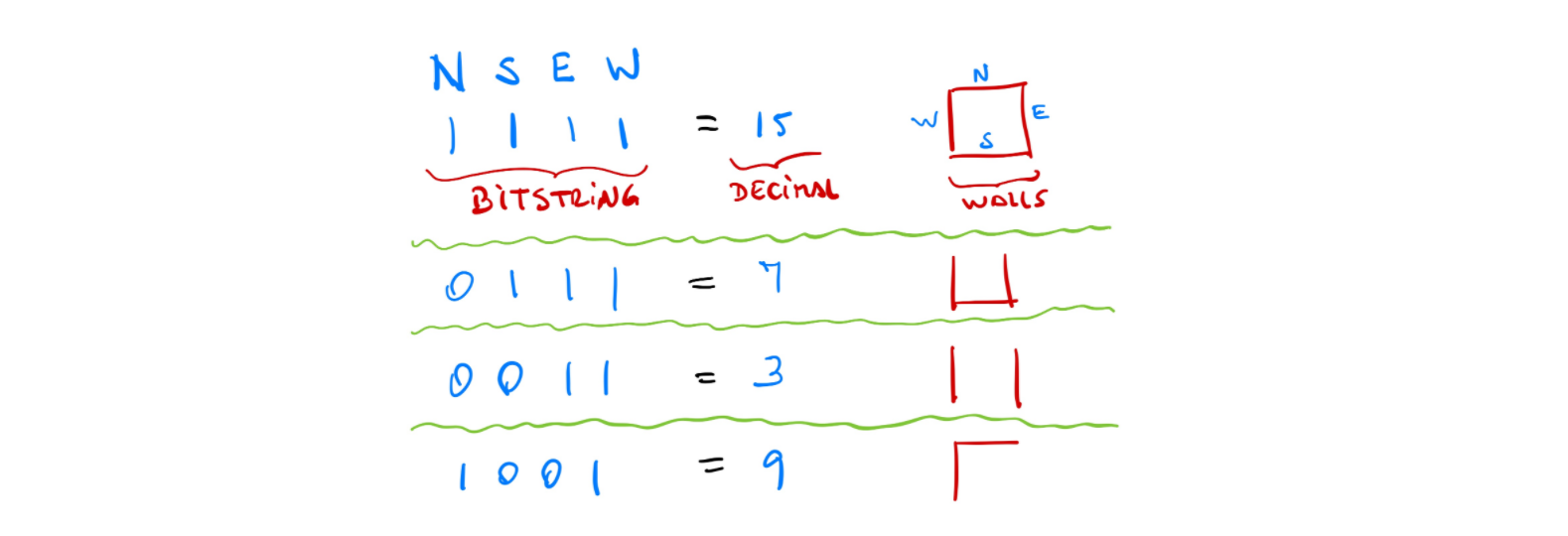Question
In c++. You will have to create 3 files: main.cpp, maze.h, maze.cpp Create a maze generator where you ask the user for the number of
In c++. You will have to create 3 files: main.cpp, maze.h, maze.cpp
Create a maze generator where you ask the user for the number of rows and columns and a random seed generator.
At each iteration a wall is removed to connect two adjacent cells. This iterative process must follow these rules:
- Walls to be removed should be selected randomly.
- Use std::rand() (read more) to generate random numbers and std::srand() (read more) to provide a seed to the random number generator
- There should be exactly one path connecting the starting and ending cells
- Every cell must be reachable from the starting cell

Picking a random neighbor must follow this procedure:
- Check the neighbors of a cell in N-S-E-W order and
- append the neighbors that were not visited yet into an empty vector neighbors
- Then use the index idx, as defined below, to pick a random neighbor with neighbors[idx]
idx = std::rand() / ((RAND_MAX + 1u) / neighbors.size());
You would need to be able to ask the user the following things
the seed value for the random number generator number of rows in the grid N > 0 number of cols in the grid M > 0 file name for the output
The seed argument is very important as it initializes the random number generator. If you change the seed, you will generate a different maze. In your code make sure you call this function exactly once before generating the maze:
std::srand(seed);
The file format for saving the maze is a two dimensional array of integers, where each integer is used to represent a cell and its walls. Each integer in the matrix ranges from 0 to 15. The idea behind this representation is that the walls are encoded using 4 bits (a nibble), and the integers are their corresponding values in decimal notation. The figure below illustrates the encoding, with 4 of the possible 16 possibilities.
 When saving the grid, the output file must be a text file in which cell values are separated by a single whitespace, and organized in n rows and m columns (the grid dimensions). In the example below Is shows the output textfile and what it visually would look like.
When saving the grid, the output file must be a text file in which cell values are separated by a single whitespace, and organized in n rows and m columns (the grid dimensions). In the example below Is shows the output textfile and what it visually would look like.

Step by Step Solution
There are 3 Steps involved in it
Step: 1

Get Instant Access to Expert-Tailored Solutions
See step-by-step solutions with expert insights and AI powered tools for academic success
Step: 2

Step: 3

Ace Your Homework with AI
Get the answers you need in no time with our AI-driven, step-by-step assistance
Get Started


